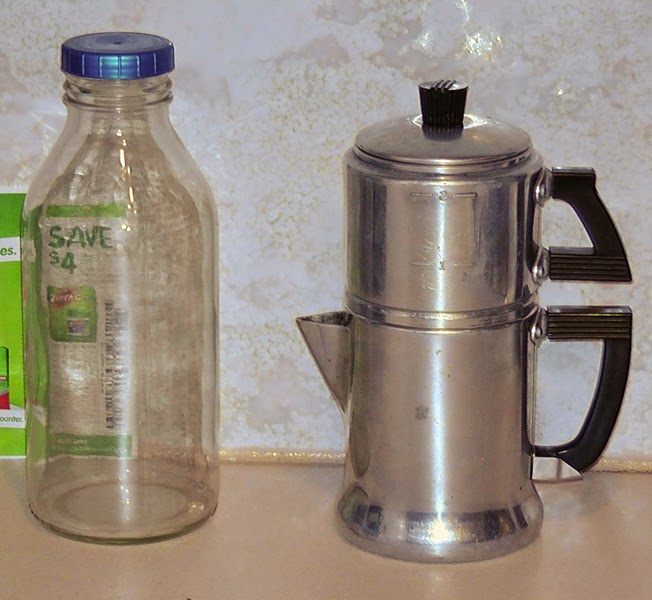"Genuine Drip-o-lator" 2-cup, Dunbar glass, possibly 1940's vintage
... but all are capable of making a great cup of coffee.
Wear-ever 3042 2-cup, early 20th Century ("TACU" stamped)
Like any other method (short of one using those silly little plastic cups or "pods"), it takes a little trial and error to get the right grind and coffee to water ratio to suit your own personal taste, but they're simple to use and the result is worth it.
Great for camping, too, since no electricity is required. But, like I said before, there's little information on this particular style of brewer. But, fortunately, there are still some sites that strive to keep the memory alive...
"Guardian Consistently Good Coffee"

- Heat the beverage urn by rinsing with hot water.
- Place dripper in top of urn and put filter disc with seam side down in bottom of dripper.
- Measure into dripper, 2 teaspoons (1 level tablespoon, if a richer flavor is desired) of standard or drip grind coffee per cup. Do not use pulverized coffee*.
- Place water distributor over coffee, pressing down firmly but not tight.
- Pour in actively boiling water to desired measure. Use fresh cold water brought to a rolling boil. (Dripper is marked 2–4–6–8 cups.) For ten cups, measure proper amount of coffee in dripper, add eight cups of boiling water and when filtered thru, add 2 cups clear boiling water and mix.
- Cover and place over very low heat or on warm part of stove. Allow about 1 minute per cup for coffee to drip.
- When coffee has dripped thru, remove dripper, place cover on urn, adjusting cover with long flange in front of spout to retain heat.


*Some espresso grinds may work, but pulverized varieties like Turkish or Greek coffee may leave a gritty finish
Guardian 8-cup (aluminum lid, pre-war; glass lid, war era)
(Text & images courtesy The Guardian Service Ware Blog)
All of these particular styles require a separate kettle for heating and dispensing water. As far as I know (so far, anyway), only the Corning, with its ingenious control valve, does not. So, being the only coffee drinker in my household, I needed an equally-vintage kettle...


.jpg)

No comments:
Post a Comment